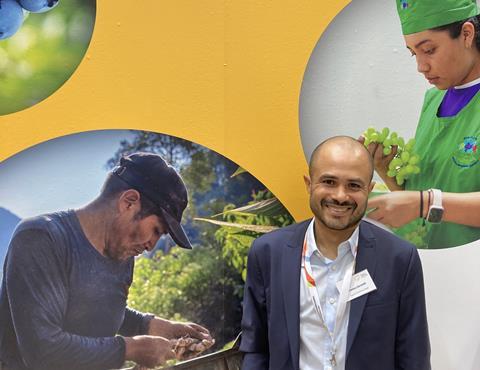Import Promotion Desk will host over 40 companies on its stand in Berlin, presenting a broad range of products and sources, including a wide assortment of melons from Brazil, Morocco and Egypt

From honeydew melons and cantaloupe to Piel de Sapo, Gaya and Galia, the range of sweet melons is expanding, and the popularity of sugar melons and watermelons is equally on the rise on the European market, according to Germany’s Import Promotion Desk (IPD).
IPD is set to present melon producers from Brazil and Morocco at next month’s Fruit Logistica in Berlin, with Egyptian companies also expanding the IPD range with a wide assortment of water and sugar melons.
“With our partners from Brazil, Morocco and Egypt, we can cover the diversity of melons and bring a high-quality range to the EU market,” said Thomas Derstadt, IPD expert sourcing and markets specialist. “At the same time, we optimally complement the European supply, as Brazilian companies in particular focus their melon exports on our winter months.”
The import promotion initiative is funded by the German Federal Ministry for Economic Cooperation and Development (BMZ), connecting producers from developing and emerging countries with European importers. At Fruit Logistica, IPD will be presenting over 40 companies from Egypt, Brazil, Ecuador, Ghana, Kenya, Colombia, Morocco, Peru, Senegal and Ukraine.
Wide range from Mossoró melon region
The Mossoró region in the state of Rio Grande do Norte is known for its melon cultivation, according to IPD, with both the soil and climatic conditions in northeastern Brazil providing ideal conditions for melon cultivation.
This is where IPD company Viva Agricola grows watermelons and a variety of sugar melons. The main varieties are honeydew melons, cantaloupe, Galia and, in smaller quantities, Gaya, Luna and Piel de Sapo.
“Viva Agricola has already supplied the EU via exporters in the past, and as a direct supplier to regional supermarkets in Brazil, the company has a good insight into the trade,” said Derstadt. “Viva Agricola is one of the medium-sized companies in the Mossoró region that favours direct trade with European partners and deliberately sets itself apart from the large trading companies that dominate melon exports. The advantage for trading partners is the direct exchange with their producer.”
Watermelons and sugar melons grow in the region all year round. However, exports to Europe are concentrated during the winter months in the Northern Hemisphere, with Brazilian supplies complementing the European harvest window and filling the winter gap.
Charentais from Morocco
The company Fresh and Organic from Marrakech specialises in growing a particular cantaloupe variety: the small Charentais melon, considered the finest of the cantaloupe melons, according to IPD. Originally from France, this variety, with its sweet and aromatic orange-coloured flesh, has found ideal growing conditions in Morocco, with plenty of sun and targeted irrigation. Harvesting begins as early as March, with the season ending in mid-May, shortly before the start of the French season.
“The quality is outstanding,” said Thomas Derstadt. “We have only received positive feedback from buyers so far. Basically, the short distance to Europe is a good argument in favour of the Moroccan range of fresh fruit and vegetables.”
Watermelons and more from Egypt
In addition to watermelons, Egypt offers a wide range of sweet melons. The company Tiba Land offers honeydew melons and Piel de Sapo.
“Egypt is an established partner in the fresh sector for Europe,” said Derstadt. “We have seen some movement in the melon supply in recent years. Companies are expanding their involvement and adding more and more varieties of sugar melons to their portfolio.”
In addition to melons from Brazil and Morocco, the range offered by the 40-plus companies at the IPD stand is also set to include avocados from Kenya, passionfruit from Ghana, limes from Colombia, maize from Morocco, ginger from Brazil and mangoes from Senegal.



